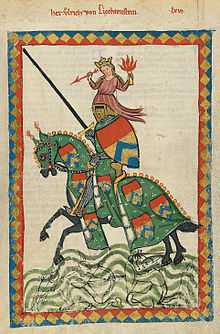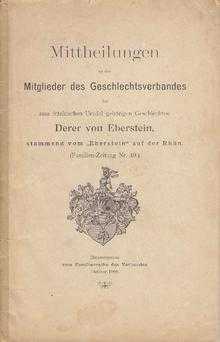Uradel


Uradel (German: "ancient nobility"[1]), refers to the oldest nobility, and not nobility acquired through letters patent or the likes.[2] It is applied to designate those knightly families in northern European nobility whose noble rank predates about A.D. 1400.
The term came into first use in the late 18th-century, used to embody a new understanding of the essence of nobility,[3] and during the 19th-century introduced by the Royal Prussian Herald Office (königlich-preußische Heroldsamt), to distinguish the oldest German noble families in modern history Europe.[4]
Germany and Austria
According to the German genealogical reference work of the nobility (Genealogisches Handbuch des Adels) the noble houses which count as Uradel are those families whose ancestral lineage can be demonstrated to date at least as far back as the year 1400 (in the later Middle Ages), belonging at that time to the knightly (German ritterbürtigen) nobility. As a general rule, families of such knightly birth or descent (Ritterbürtigkeit) from the Middle Ages, needed to show at least three generations of knightly life, as well as suitable marriage with social equals, so that even the knightly families documented as dating from the late Middle Ages (between about 1350 and 1400) are likely to have had already at least a century of possessing that status.
In contrast, the younger Briefadel are families of the post-medieval nobility, probably originally of bourgeois (Bürger, burgher) or peasant origin, ennobled in the modern era by letters patent issued by a monarch, usually with the award of a coat of arms if they did not already have one. Said to have been modelled on the earlier French practice of raising officials (especially lawyers) to the aristocracy, the earliest letters patent conferring nobility in Germany were issued under Charles IV, Holy Roman Emperor, in the late 14th-century.[5]
The first use of the word Uradel to designate the oldest nobility dates from 1788 and it had assumed its present-day meaning by no later than 1800.[3][6] The term is found in the Almanach de Gotha from 1907, in which it is applied to all persons and families known to have carried specific titles of nobility before the year 1400. According to a third more strict definition, described in Der Große Brockhaus in 1928 (vol. 1, s.v. "Adel"), an attestation prior to the year 1350 is required to establish Uradel status.
Uradel and Briefadel families are generally further divided into the categories adlig (untitled and titled nobility), freiherrlich (baronial), gräflich (comital), and fürstlich (princely and ducal) houses.
Austria
A similar term used more often than Uradel in Austria is alter Adel ("old nobility").[4]
Scandinavia
The term Uradel can be found in Scandinavian genealogy from the early 20th century. The contrasting term Briefadel was calqued as brevadel.[7]
The 1926 edition of the Swedish Nordisk familjebok also cites 1350 as the required date, because "the oldest known letter patent dates to 1360".[8] The letter patent referred to here is that issued by Holy Roman Emperor Charles IV to Wicker Frosch, a burgher of Frankfurt, on 30 September 1360. In Norway, one of the earliest known letters patent is of 1458.
References
- Notes
- ↑ Godsey 2004, p. 58.
- ↑ Duden; Meaning of Uradel, in German.
- ↑ 3.0 3.1 William D. Godsey (18 November 2004). Nobles and Nation in Central Europe: Free Imperial Knights in the Age of Revolution, 1750-1850. Cambridge University Press. pp. 57–59. doi:10.1017/CBO9780511496752.004. ISBN 978-1-139-45609-8.
- ↑ 4.0 4.1 Granichstätten-Czerva, Rudolf von (1947). "Altösterreichisches Adels- und Wappenrecht". Adler. Zeitschrift für Genealogie und Heraldik (in German) (1.4): 49–58.
- ↑ Ursula Siems, Kurt Kluxen (1979). "Politik, Gesellschaft, Wirtschaft von 800 bis 1776". In Tenbrock, Kluxen, Grütter. Von Zeiten und Menschen 2. Paderborn. pp. 39–41.
- ↑ Jacob Grimm, Deutsches Wörterbuch erst im 19. jh. gebraucht zur bezeichnung ältesten adels. ("in use only from the 19th c. for the designation of older nobility"), citing Eichhorn (1821, 1827).
- ↑ Salmonsens Konversationsleksikon (1915: 169)
- ↑ Nordisk familjebok (1926:1120)
- Bibliography
- Godsey, William D. (2004). Nobles and Nation in Central Europe: Free Imperial Knights in the Age of Revolution, 1750–1850. Cambridge University Press. ISBN 9781139456098.